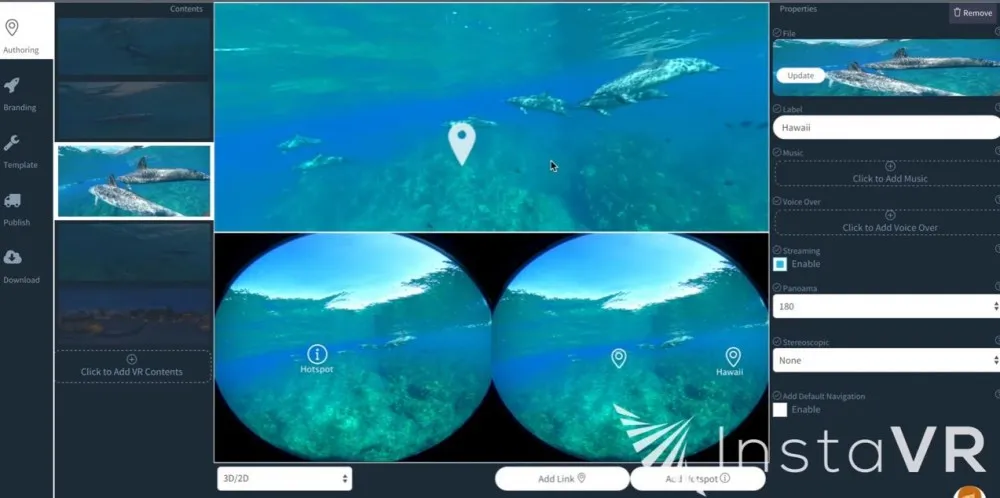There are more and more ways to create VR content now than ever before. Whether you want to make games using the latest and greatest engines, like Unity’s VR functionalities, tour the world, or explore medical fields, VR is everywhere. That’s why streamlining the development and publishing process is so important.
InstaVR, a creation from CANDIFLY VR Technologies, is at the forefront of simple, easy, and fast VR content creation. InstaVR is a web-based VR creation platform that was detailed back at CES in January. Now, following SVVR, they’ve updated the platform to include not only heat-mapping analytics features, but also the ability to edit VR content inside web browsers and support in-browser distribution and app publishing capabilities.
This is huge for tracking data and monitoring how users interact with content from a developer’s perspective. From a recently distributed press release, CANDIFLY goes on to say:
VR content is distinctive, in that it allows users to select the camera position and angle more freely than is possible with conventional content. The challenge, however, is that the developer does not know where to create and improve VR content because they do not know where the user is looking.
Apps created with InstaVR will automatically collect information on the user’s point-of-gaze and transmit that information to the InstaVR analysis platform. InstaVR clients can now see the areas where app users are looking and the order in which their gaze moves, through the VR content editing screen on their browser. This allows developers to create and adjust effective VR content based on factual analysis.
Through email correspondence, we also discussed direct and powerful applications of InstaVR’s platform in particular current markets. Most notably, Daniel H. Haga, CEO and Founder of CANDIFLY, noted the applications for real estate, automotive, and tourism industries – all of which are heavily driven by visual products and interactivity. 360-degree photos and video aren’t revolutionary by any means, but a quick, efficient, and trackable way to develop and publish them is incredibly useful.
“Creating a customized VR app solution is seen as too complicated and expensive, particularly when it comes to businesses or entrepreneurs who wish to use VR for sales and marketing purposes,” explains Haga. “InstaVR was developed in order to allow consumers the opportunity to evaluate products and services using Virtual Reality without being constrained by time, geo-location and capacity.”
As you can tell by the video demonstrations in this post, InstaVR makes viewing and accessing the content easy and flexible, but its creation is as well. This is the type of program that sales professionals and non-tech experts can easily manage. That’s where the future power of VR really lies. “I believe there is a huge opportunity in the real estate industry, where agents can utilize InstaVR for sales and marketing purposes,” says Haga. “Real Estate agents would be able to take 360 degree photos/videos of each room of the house using any 360 camera. Afterwards, they can log into InstaVR, upload their assets, view a preview of the VR tour in their web browser and publish the VR tour to the mobile/computer app with push notification. Prospective buyers will be able to fully “view” the property before contacting the agent for a physical tour. The real estate agent will get users’ eye tracking feedback via heat-mapping analytics and refine the VR tour in InstaVR to maximize conversion ratio.”
You can try out InstaVR right now for yourself by visiting their website.


























